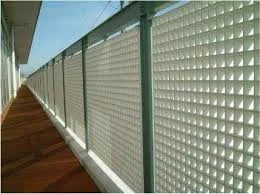
-
 Afrikaans
Afrikaans -
 Albanian
Albanian -
 Amharic
Amharic -
 Arabic
Arabic -
 Armenian
Armenian -
 Azerbaijani
Azerbaijani -
 Basque
Basque -
 Belarusian
Belarusian -
 Bengali
Bengali -
 Bosnian
Bosnian -
 Bulgarian
Bulgarian -
 Catalan
Catalan -
 Cebuano
Cebuano -
 China
China -
 China (Taiwan)
China (Taiwan) -
 Corsican
Corsican -
 Croatian
Croatian -
 Czech
Czech -
 Danish
Danish -
 Dutch
Dutch -
 English
English -
 Esperanto
Esperanto -
 Estonian
Estonian -
 Finnish
Finnish -
 French
French -
 Frisian
Frisian -
 Galician
Galician -
 Georgian
Georgian -
 German
German -
 Greek
Greek -
 Gujarati
Gujarati -
 Haitian Creole
Haitian Creole -
 hausa
hausa -
 hawaiian
hawaiian -
 Hebrew
Hebrew -
 Hindi
Hindi -
 Miao
Miao -
 Hungarian
Hungarian -
 Icelandic
Icelandic -
 igbo
igbo -
 Indonesian
Indonesian -
 irish
irish -
 Italian
Italian -
 Japanese
Japanese -
 Javanese
Javanese -
 Kannada
Kannada -
 kazakh
kazakh -
 Khmer
Khmer -
 Rwandese
Rwandese -
 Korean
Korean -
 Kurdish
Kurdish -
 Kyrgyz
Kyrgyz -
 Lao
Lao -
 Latin
Latin -
 Latvian
Latvian -
 Lithuanian
Lithuanian -
 Luxembourgish
Luxembourgish -
 Macedonian
Macedonian -
 Malgashi
Malgashi -
 Malay
Malay -
 Malayalam
Malayalam -
 Maltese
Maltese -
 Maori
Maori -
 Marathi
Marathi -
 Mongolian
Mongolian -
 Myanmar
Myanmar -
 Nepali
Nepali -
 Norwegian
Norwegian -
 Norwegian
Norwegian -
 Occitan
Occitan -
 Pashto
Pashto -
 Persian
Persian -
 Polish
Polish -
 Portuguese
Portuguese -
 Punjabi
Punjabi -
 Romanian
Romanian -
 Russian
Russian -
 Samoan
Samoan -
 Scottish Gaelic
Scottish Gaelic -
 Serbian
Serbian -
 Sesotho
Sesotho -
 Shona
Shona -
 Sindhi
Sindhi -
 Sinhala
Sinhala -
 Slovak
Slovak -
 Slovenian
Slovenian -
 Somali
Somali -
 Spanish
Spanish -
 Sundanese
Sundanese -
 Swahili
Swahili -
 Swedish
Swedish -
 Tagalog
Tagalog -
 Tajik
Tajik -
 Tamil
Tamil -
 Tatar
Tatar -
 Telugu
Telugu -
 Thai
Thai -
 Turkish
Turkish -
 Turkmen
Turkmen -
 Ukrainian
Ukrainian -
 Urdu
Urdu -
 Uighur
Uighur -
 Uzbek
Uzbek -
 Vietnamese
Vietnamese -
 Welsh
Welsh -
 Bantu
Bantu -
 Yiddish
Yiddish -
 Yoruba
Yoruba -
 Zulu
Zulu
Advanced FRP Clarification System for Enhanced Water Treatment Efficiency
Understanding the FRP Clarifier System An Overview
In the realm of water treatment, the need for effective and reliable systems has never been more critical. One such innovation is the Fiberglass Reinforced Plastic (FRP) clarifier system. This technology has gained popularity due to its unique characteristics, which make it suitable for a wide range of applications in municipal and industrial water treatment processes.
What is an FRP Clarifier System?
An FRP clarifier system is essentially a structure designed to remove suspended solids and other impurities from water through sedimentation. The FRP in its name refers to the material used in its construction—fiberglass reinforced plastic. This material is known for its strength, durability, and resistance to corrosion, making it an excellent choice for water treatment applications where exposure to harsh chemicals and environmental conditions is a concern.
Key Features of FRP Clarifier Systems
1. Corrosion Resistance One of the primary advantages of FRP materials is their resistance to various chemicals and environmental factors. Unlike traditional materials like steel, which can corrode over time, FRP can withstand the rigors of wastewater treatment processes without losing structural integrity.
2. Lightweight and Easy Installation FRP components are significantly lighter than their metal counterparts, which can result in easier handling and transport. This characteristic reduces installation costs and time, making FRP clarifier systems a practical choice for many facilities.
3. Cost-Effectiveness Although the initial cost may be higher than some traditional systems, the long-term savings due to reduced maintenance and replacement needs can make FRP clarifier systems more economical over time.
4. Customization FRP clarifiers can be tailored to meet specific operational needs, accommodating variations in flow rate, size, and design. This flexibility allows facilities to optimize their water treatment processes effectively.
frp clarifier system

How FRP Clarifier Systems Work
The FRP clarifier system operates on fundamental principles of sedimentation. Water is introduced into the clarifier, where it flows slowly enough to allow suspended solids to settle at the bottom. The settled solids, known as sludge, can then be removed periodically to maintain the system’s efficiency.
The design of the clarifiers often includes features such as hopper-shaped bottoms to enhance sludge collection and discharge systems that facilitate the removal of accumulated solids. Additionally, some systems incorporate overflow weirs or skimmers to aid in separating clarified water from the sludge.
Applications of FRP Clarifier Systems
The versatility of FRP clarifier systems means they can be deployed in various applications, including
- Municipal Wastewater Treatment Many cities implement FRP clarifiers in their treatment plants to purify water before it's released into waterways or returned for reuse. - Industrial Wastewater Management Industries that generate wastewater, such as food and beverage, pharmaceuticals, and textiles, can benefit from the efficient removal of contaminants using FRP systems.
- Stormwater Management FRP clarifiers are also utilized in managing stormwater runoff, helping to reduce the environmental impact of urban development.
Conclusion
The FRP clarifier system represents a significant advancement in water treatment technology. Its unique properties, coupled with effective design and operation, make it a reliable solution for achieving clean and safe water. As water scarcity and quality issues grow globally, the continued adoption of innovative solutions like FRP clarifiers will play a pivotal role in ensuring sustainable water management practices. By understanding the benefits and operational mechanisms of FRP clarifiers, stakeholders can make informed decisions about their water treatment needs and contribute to a more sustainable future.









